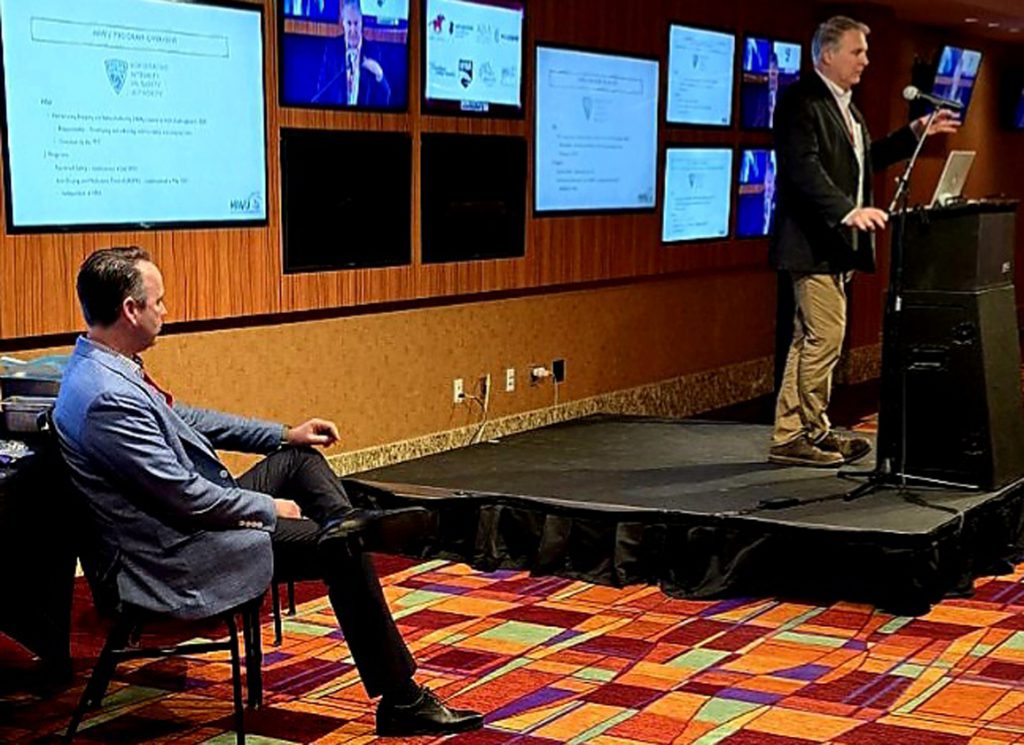The Organization of Racing Investigators opened the final day of its Parx conference with another set of timely presentations.
Topics included the impact of bush track racing, and a variety of legal and scientific case studies, which were all geared for the investigator's toolkit.
With varied backgrounds in law enforcement and security, many attendees have experience growing up around horses. Investigators work for tracks and racing commissions, but they can never turn their backs on the chance to improve their techniques and plug into the ORI network fiber.
Kassie Creed, a Safety and Compliance Associate who works at Keeneland under Dr. Stuart Brown in equine safety, attended her second ORI meeting. She is part of the up-and-coming generation who is learning from those with decades of experience.
“Something I've noticed as a woman, thinking about my age, things that are relevant now will hit my generation in a different way,” she said. “I'm a small-picture person and my local horse population is my chief concern. So, when I came last year to ORI I added new skills and was able to apply what I learned here to my day-to-day processes, which really helps.”
The group began the day by hearing a talk on unregulated horse racing in North America by the USDA's Dr. Angela Pelzel-McCluskey. The epidemiologist has found 191 'bush tracks' across 30 states, and though all of them are racing Quarter Horses, she said that it is entirely possible that Thoroughbreds could be present too.
“Every time I go looking for these unregulated places, I find more, and if you think they are not in your backyard, like in New England, you'd be wrong,” she said. “The spread of diseases, the use of dirty needles, is a crisis, and there is no federal law that makes this racing illegal.”
The Association of Racing Commissioners International's Ed Martin added during his session, “We are being lumped in with unsanctioned racing and the public sees the videos and they share them. We are going to have to deal with this. It's here. This industry needs to be talking to one another. We need to get together. We need certainty.”
Other presentations were offered by seasoned experts who work with Comisión de Juegos de Puerto Rico and from across the state of Pennsylvania. Their specialist's view concerning case studies went to the heart of equine health by examining everything from how pathology can be utilized in court cases, illegal horse ownership, and situational awareness when conducting interrogations.
The conference wrapped with Ann McGovern, the Horseracing Integrity & Safety Authority's Director of Racetrack Safety. Her presentation addressed last year's catastrophic injuries at Churchill Downs by highlighting the techniques which were implemented during the assessment.
“The process led us to found the HISA Track Surface Advisory Committee and expand on tools like an individual horse's exercise signature and their past performances,” she said.
As for ORI's next conference location, Keeneland was named as the site for 2025 with Dr. Brown serving as the conference chair.
The post Bush Tracks, Host Of Other Investigative Topics Covered On ORI Day Two appeared first on TDN | Thoroughbred Daily News | Horse Racing News, Results and Video | Thoroughbred Breeding and Auctions.



